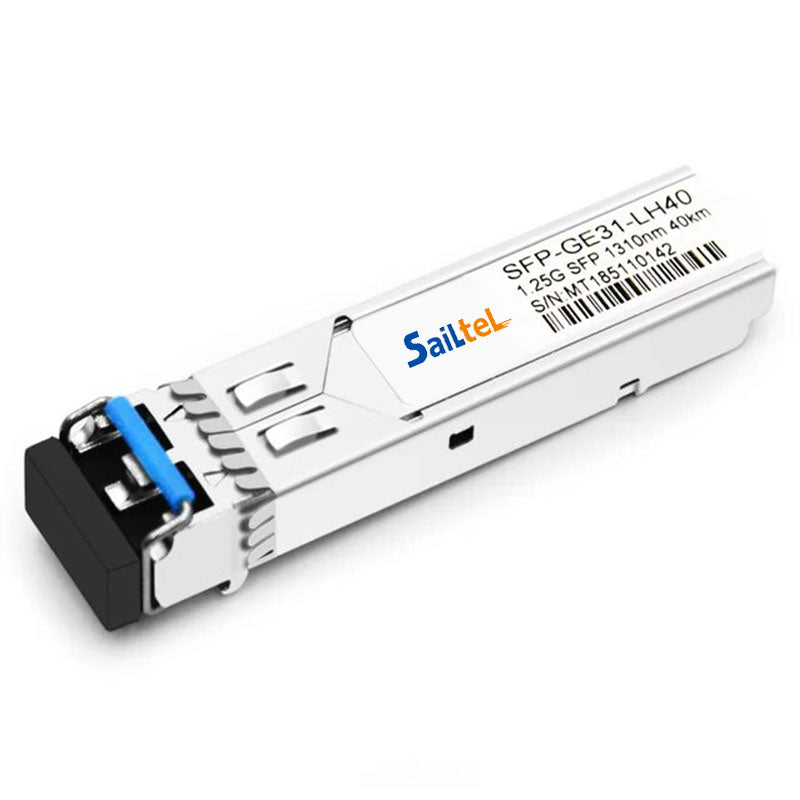SFP modules are crucial for networking and data communications. They are compact, versatile, and indispensable for businesses and IT professionals. However, choosing the right SFP can be a daunting task with myriad options available in the market. To make things easier for you, we have created this comprehensive buying guide focused on SFP modules from Sailtel, a reputable manufacturer in the industry.
SFP modules from manufacturers like Sailtel are versatile components that find applications in a wide range of industries. Whether you are managing a data center, a telecommunications network, or an ISP, understanding the benefits, configurations, and best practices associated with SFP modules is crucial for ensuring seamless connectivity and network performance. As technology continues to advance, SFP modules will likely remain at the forefront of networking solutions, providing the flexibility and reliability needed to support our ever-growing data needs.
Understanding SFP Module: What is the SFP Module?
Before delving into the specifics of SFP modules, it's essential to understand what they are and how they function. SFP modules are hot-swappable, compact transceivers used in networking equipment like switches, routers, and media converters. They facilitate the transmission and reception of data over optical or copper cables, enabling network connectivity over various distances and at different speeds.
Identifying Your Requirements
Before we dive into their applications, it's crucial to grasp the basics of SFP modules. These hot-swappable, compact optical transceivers serve as the bridge between fiber-optic or copper cabling and networking devices like switches, routers, and servers. They are designed to transmit and receive data over different types of optical and electrical interfaces.
Selecting the appropriate SFP module begins with a clear understanding of your networking requirements. Consider the following factors:
- Data Rate:Determine the data rate or speed needed for your network. SFP modules come in various speeds, such as 1G, 10G, 25G, and 100G. Choose a module that matches your network's data rate.
- Distance:Evaluate the distance over which data needs to be transmitted. SFP modules support different transmission distances, ranging from a few meters to tens of kilometers. Select the appropriate module based on your network's reach.
- Fiber Type:Consider the type of fiber in your network—single-mode or multi-mode. Ensure that the SFP module is compatible with the fiber type to avoid compatibility issues.
- Connector Type:SFP modules come with different connector types, such as LC, SC, or RJ45. Ensure compatibility with your existing infrastructure.
Sailtel SFP Modules
Sailtel is a reputable manufacturer known for its high-quality SFP modules. They offer a wide range of SFP modules designed to meet diverse networking needs. When considering Sailtel SFP modules, keep the following factors in mind:
- Compatibility:Sailtel SFP modules are designed to work seamlessly with various networking equipment. However, it's essential to verify compatibility with your specific devices.
- Quality and Reliability: Sailtel is committed to producing reliable and durable SFP modules. Look for product reviews and certifications to ensure the quality meets your standards.
- Warranty and Support:Check the warranty and support options offered by Sailtel. A solid warranty can provide peace of mind in case of any issues.
Making the Right Choice
Now that you have a clear understanding of your requirements and Sailtel's offerings, it's time to make an informed decision:
- Research:Explore Sailtel's website and product documentation to find the SFP module that matches your needs.
- Consult Experts:If you're uncertain, consult with networking experts or reach out to Sailtel's customer support for guidance.
- Budget:Consider your budget constraints. While quality is crucial, choose a module that fits within your financial plan.
- Future-proofing:Think about future network expansion. Selecting slightly higher-capacity modules than your immediate needs may save you from frequent upgrades.
SFP Modules in Data Centers
- Benefit:Data centers are the heart of modern businesses, and SFP modules play a vital role in their operations. These modules offer high-speed connectivity and flexibility, making them ideal for the ever-evolving data center landscape.
- Configuration:In data centers, SFP modules are commonly used for both short and long-distance connections. Multi-mode SFPs are suitable for shorter distances within a data center, while single-mode SFPs provide the necessary reach for connections spanning kilometers.
- Best Practices:To maximize performance and reliability, data center administrators should consider factors like cable type, connector cleanliness, and the compatibility of SFP modules with networking equipment. Regular monitoring and maintenance are also crucial to ensure uninterrupted operations.
SFP Modules in Telecommunications
- Benefit:The telecommunications industry relies heavily on SFP modules to provide high-speed and reliable connections for voice, data, and video services. Their compact size and compatibility with various transmission technologies make them indispensable in this sector.
- Configuration:Telecom operators often use a variety of SFP modules, including CWDM and DWDM SFPs, to support different wavelength requirements and maximize the capacity of optical networks.
- Best Practices:Redundancy and failover strategies are essential in telecommunications to ensure uninterrupted service. Network operators should also adhere to strict maintenance schedules to prevent downtime.
SFP Modules for ISPs
- Benefit:Internet Service Providers (ISPs) face the challenge of delivering high-speed internet to their customers. SFP modules, with their high data rates and flexibility, empower ISPs to meet this demand efficiently.
- Configuration:ISPs typically employ SFP modules in their core and distribution networks, using various interfaces such as Gigabit Ethernet, 10 Gigabit Ethernet, or even faster connections to interconnect their network components.
- Best Practices:ISPs must ensure network security, scalability, and redundancy to meet the growing demands of their customers. Regular monitoring, firmware updates, and capacity planning are essential for ISP networks relying on SFP modules.
Conclusion
Choosing the right SFP module is essential for maintaining a reliable and efficient network. Sailtel offers a wide range of high-quality SFP modules suitable for various networking scenarios. By understanding your requirements and carefully evaluating Sailtel's product offerings, you can ensure that your network operates smoothly and efficiently, meeting your business or professional needs for years to come.

